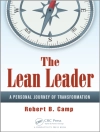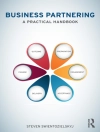Self-publishing is not a new phenomenon. Indeed, it was commonly practiced in the 19th and 20th centuries; the fact that Dostoyevski (incidentally, one of the pioneers of crowdfunding) asked his friends for money to finance his books, that Nietzsche paid for the self-publishing of 50 copies of ‘Thus spoke Zarathustra’ out of his own pocket and that Lewis Carroll did the same thing with ‘Alice in Wonderland’, as did Marcel Proust, Alexandre Dumas, Rudyard Kipling, Mark Twain, Edgar Alan Poe, George Bernard Shaw and Ernest Hemingway, is not something to be overlooked. All of these writers started off as independent authors in the days when paying for the publication of books out of one’s own pocket was not looked down on and those who wished to make their work known could use their own means, without shame, to reach a limited audience without being treated with contempt. First and foremost, because it was considered that the author in question believed in his work to the extent that he was willing to invest in it.
Self-publishing platforms cannot be overlooked. They are technological companies that publish, distribute and promote on demand. They are fast and have a large portfolio of authors. One of the key elements of this decade (2010-2020) will be the consolidation of self-publishing in the book world. In this context of change, the objective of the study ‘Indie Authors: The Self-publishing Revolution’ is to provide professionals in the book world – be they publishers, agents, authors, booksellers or librarians – with a broad analysis of the impact of self-publishing in the publishing sector so that each one may establish the business opportunities and advantages of self-publishing.
Cuprins
INTRODUCTION: THE INDIE AUTHOR REVOLUTION
1- DEVELOPMENT AND TRENDS IN THE NEW,
SELF-PUBLISHING WORLD.
1.1 DEVELOPMENT OF SELF-PUBLISHING IN THE U.S
1.2 DEVELOPMENT OF SELF-PUBLISHING IN EUROPE
2. ANALYSIS OF SELF-PUBLISHING PLATFORMS IN THE U.S.
AND EUROPE
2.1 SELF-PUBLISHING PLATFORMS
2.2 READING AND PUBLISHING PLATFORMS
2.3 SELF-PUBLISHING AND DISTRIBUTION PLATFORMS
2.4 ADDING UP THE FIGURES
3 BOOK SELLING PRICES, A KEY ELEMENT IN THE
DIGITAL AGE
3.1 NEW RULES OF THE GAME: UNDERSTANDING DYNAMIC PRICING
3.2 RETAIL PRICES OF SELF-PUBLISHED BOOKS
4. AUTHORS IN THE FACE OF SELF-PUBLISHING
4.1 J.K.ROWLING
4.2 GUY KAWASAKI
4.3 MERCEDES PINTO
5. THE PUBLISHER’S ROLE IN THE 21st CENTURY
5.1 FINE PRINT OF SELF-PUBLISHING CONTRACTS
6. STRATEGIES FOR THE MARKETING AND DISTRIBUTION OF
SELF-PUBLISHED BOOKS AND THEIR VISIBILITY
6.1 AUTHORS’ DIGITAL RIGHTS
7. CONCLUSIONS OF OUR STUDY ON AUTHORS AND CONTROL OVER THEIR WORK
7.1 WRITER BY PROFESSION
7.2 FOR THE LOVE OF ART AS A CONCEPT WRITERS’ SELF-ESTEEM
7.4 THE WORD ‘SALE’ IS RELATED TO SUCCESS INSTEAD OF MONEY
8. CONCLUSIONS OF STUDY: ‘INDEPENDENT AUTHORS: THE EMERGENCE OF THE INDIE REVOLUTION’.
Despre autor
Javier Celaya is the vice president of the Spanish Digital Magazines Association (ARDE), member of the Executive Board of the Digital Economy Association of Spain and CEO and founder of Dosdoce.com, an online portal analyzes the use of the new technologies in the cultural sector and publishes annual studies related to trends in the cultural sector: ‘Social Networks Management Guide’; ‘Book digitalization trends in Spain’; ‘Web 2.0 trends in museums & art galleries’ and ‘The role of communication in book promotion’, among others.
Javier is author of several books (‘Corporate blogging’, ‘Corporate strategies in the web 2.0’, ‘Business Communication 2.0″, etc.) and writes daily in the Spanish digital cultural trends focused blog Comunicación Cultural.
He also is the co-director and adjunct professor of the Digital Publishing Master at the University of Alcala in Madrid. Javier holds a Master’s Degree in International Relations from Columbia University in New York and Bachelor of Science degree in Economics from Boston College.












